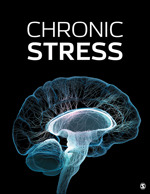 “This review is to summarize most recent evidence published in the last 18 months on medical and recreational use of cannabis and cannabinoids in relation to anxiety, depression (unipolar and bipolar), and dysregulation of emotions as part of posttraumatic stress disorders (PTSD) and emotionally instable personality disorders.
“This review is to summarize most recent evidence published in the last 18 months on medical and recreational use of cannabis and cannabinoids in relation to anxiety, depression (unipolar and bipolar), and dysregulation of emotions as part of posttraumatic stress disorders (PTSD) and emotionally instable personality disorders.
It also covers the investigation of endocannabinoids as potential biomarkers in these conditions. This is important with increasing medicinal use of cannabinoids and growing social tolerance towards recreational cannabis use.
RECENT FINDINGS:
There is some recent evidence suggesting cannabinoids, cannabidiol or cannabidiol-enriched cannabis preparations have anxiolytic properties. In addition, depression may be worsened by cannabis use, however, randomized controlled trials (RCT) are lacking.
New evidence also suggests that cannabidiol or cannabidiol-enriched cannabis use for PTSD and emotion regulation can induce hyporesponse to fear and stress. Further, several lines of evidence point to the endocannabinoid system as a key player in some of the reviewed disorders, in particular anxiety and PTSD.
SUMMARY:
The most recent evidence for a therapeutic use of cannabinoids in the reviewed conditions is weak and lacking well designed RCTs. However, there is some indication of the role of the endocannabinoid system in these conditions that warrant further studies.”
https://www.ncbi.nlm.nih.gov/pubmed/31714262
https://insights.ovid.com/crossref?an=00001504-900000000-99165

 “Post-traumatic stress disorder sharply increases the risk of depression and suicide. Individuals living with post-traumatic stress disorder frequently use cannabis to treat associated symptoms.
“Post-traumatic stress disorder sharply increases the risk of depression and suicide. Individuals living with post-traumatic stress disorder frequently use cannabis to treat associated symptoms. “The role of the endocannabinoid system in stress-related psychiatric symptoms has been investigated in many animal and human studies.
“The role of the endocannabinoid system in stress-related psychiatric symptoms has been investigated in many animal and human studies. “Preclinical studies have shown that cannabidiol (CBD) mitigates fear memories by facilitating their extinction or interfering with their generalization and reconsolidation. The brain regions and mechanisms underlying these effects, and their temporal window, are still poorly understood. The present paper aimed at investigating related questions in the dorsal hippocampus (DH) during contextual fear consolidation.
“Preclinical studies have shown that cannabidiol (CBD) mitigates fear memories by facilitating their extinction or interfering with their generalization and reconsolidation. The brain regions and mechanisms underlying these effects, and their temporal window, are still poorly understood. The present paper aimed at investigating related questions in the dorsal hippocampus (DH) during contextual fear consolidation. “Memory and GABAergic activity in the hippocampus of stressed rats improve after n-3 polyunsaturated fatty acid (PUFA) supplementation.
“Memory and GABAergic activity in the hippocampus of stressed rats improve after n-3 polyunsaturated fatty acid (PUFA) supplementation. “Modulation of
“Modulation of  “Posttraumatic stress disorder (PTSD) is a potentially debilitating mental health problem.
“Posttraumatic stress disorder (PTSD) is a potentially debilitating mental health problem. “Post-traumatic stress disorder (PTSD) is a common psychiatric disorder resulting from a traumatic event, is manifested through hyperarousal, anxiety, depressive symptoms, and sleep disturbances.
“Post-traumatic stress disorder (PTSD) is a common psychiatric disorder resulting from a traumatic event, is manifested through hyperarousal, anxiety, depressive symptoms, and sleep disturbances. “Δ9-Tetrahydrocannabinol (THC, a CB1 receptor agonist) and Cannabidiol (CBD, a non-competitive antagonist of endogenous CB1 and CB2 ligands) are two primary components of Cannabis species, and may modulate fear learning in mammals.
“Δ9-Tetrahydrocannabinol (THC, a CB1 receptor agonist) and Cannabidiol (CBD, a non-competitive antagonist of endogenous CB1 and CB2 ligands) are two primary components of Cannabis species, and may modulate fear learning in mammals. “Combat veterans are at elevated suicide risk. The goal of this study was to test the hypothesis that combat veterans who have made a suicide attempt post-deployment can be distinguished from combat veterans who have never made a suicide attempt based on differences in psychological and biological variables. For the latter, we focused on endogenous cannabinoids, neuroendocrine markers that are associated with stress. Demographic and clinical parameters of suicide attempters and non-attempters were assessed. Blood samples were assayed for anandamide (AEA), 2-arachidonoylglycerol (2-AG), and cortisol. Suicide attempters had higher Scale for Suicidal Ideation (SSI) scores in comparison to non-attempters. Controlling for gender, 2-AG levels were higher among suicide attempters in comparison to non-attempters. Cortisol levels positively correlated with 2-AG levels and negatively correlated with SSI scores among non-attempters but not among attempters. AEA levels negatively correlated with SSI scores among attempters but not among non-attempters. Our results indicate that there are psychological and biological differences between combat veterans with or without a history of suicidal attempt. Our findings also suggest that clinically observed differences between the groups may have a neurobiological basis.”
“Combat veterans are at elevated suicide risk. The goal of this study was to test the hypothesis that combat veterans who have made a suicide attempt post-deployment can be distinguished from combat veterans who have never made a suicide attempt based on differences in psychological and biological variables. For the latter, we focused on endogenous cannabinoids, neuroendocrine markers that are associated with stress. Demographic and clinical parameters of suicide attempters and non-attempters were assessed. Blood samples were assayed for anandamide (AEA), 2-arachidonoylglycerol (2-AG), and cortisol. Suicide attempters had higher Scale for Suicidal Ideation (SSI) scores in comparison to non-attempters. Controlling for gender, 2-AG levels were higher among suicide attempters in comparison to non-attempters. Cortisol levels positively correlated with 2-AG levels and negatively correlated with SSI scores among non-attempters but not among attempters. AEA levels negatively correlated with SSI scores among attempters but not among non-attempters. Our results indicate that there are psychological and biological differences between combat veterans with or without a history of suicidal attempt. Our findings also suggest that clinically observed differences between the groups may have a neurobiological basis.”